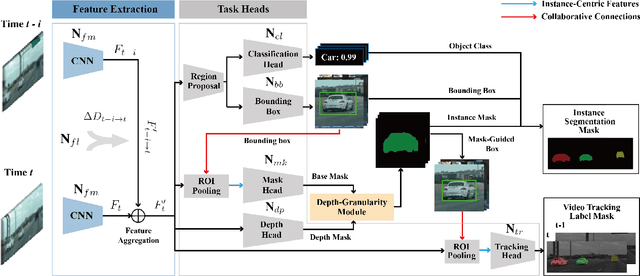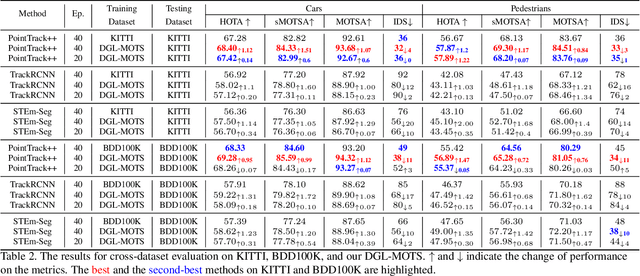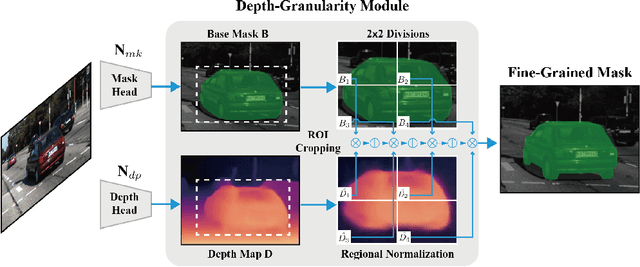Xingyu Jiang
Image Restoration via Multi-domain Learning
May 07, 2025Abstract:Due to adverse atmospheric and imaging conditions, natural images suffer from various degradation phenomena. Consequently, image restoration has emerged as a key solution and garnered substantial attention. Although recent Transformer architectures have demonstrated impressive success across various restoration tasks, their considerable model complexity poses significant challenges for both training and real-time deployment. Furthermore, instead of investigating the commonalities among different degradations, most existing restoration methods focus on modifying Transformer under limited restoration priors. In this work, we first review various degradation phenomena under multi-domain perspective, identifying common priors. Then, we introduce a novel restoration framework, which integrates multi-domain learning into Transformer. Specifically, in Token Mixer, we propose a Spatial-Wavelet-Fourier multi-domain structure that facilitates local-region-global multi-receptive field modeling to replace vanilla self-attention. Additionally, in Feed-Forward Network, we incorporate multi-scale learning to fuse multi-domain features at different resolutions. Comprehensive experimental results across ten restoration tasks, such as dehazing, desnowing, motion deblurring, defocus deblurring, rain streak/raindrop removal, cloud removal, shadow removal, underwater enhancement and low-light enhancement, demonstrate that our proposed model outperforms state-of-the-art methods and achieves a favorable trade-off among restoration performance, parameter size, computational cost and inference latency. The code is available at: https://github.com/deng-ai-lab/SWFormer.
MINIMA: Modality Invariant Image Matching
Dec 27, 2024



Abstract:Image matching for both cross-view and cross-modality plays a critical role in multimodal perception. In practice, the modality gap caused by different imaging systems/styles poses great challenges to the matching task. Existing works try to extract invariant features for specific modalities and train on limited datasets, showing poor generalization. In this paper, we present MINIMA, a unified image matching framework for multiple cross-modal cases. Without pursuing fancy modules, our MINIMA aims to enhance universal performance from the perspective of data scaling up. For such purpose, we propose a simple yet effective data engine that can freely produce a large dataset containing multiple modalities, rich scenarios, and accurate matching labels. Specifically, we scale up the modalities from cheap but rich RGB-only matching data, by means of generative models. Under this setting, the matching labels and rich diversity of the RGB dataset are well inherited by the generated multimodal data. Benefiting from this, we construct MD-syn, a new comprehensive dataset that fills the data gap for general multimodal image matching. With MD-syn, we can directly train any advanced matching pipeline on randomly selected modality pairs to obtain cross-modal ability. Extensive experiments on in-domain and zero-shot matching tasks, including $19$ cross-modal cases, demonstrate that our MINIMA can significantly outperform the baselines and even surpass modality-specific methods. The dataset and code are available at https://github.com/LSXI7/MINIMA .
AVS-Net: Point Sampling with Adaptive Voxel Size for 3D Point Cloud Analysis
Feb 27, 2024Abstract:Efficient downsampling plays a crucial role in point cloud learning, particularly for large-scale 3D scenes. Existing downsampling methods either require a huge computational burden or sacrifice fine-grained geometric information. This paper presents an advanced sampler that achieves both high accuracy and efficiency. The proposed method utilizes voxel-based sampling as a foundation, but effectively addresses the challenges regarding voxel size determination and the preservation of critical geometric cues. Specifically, we propose a Voxel Adaptation Module that adaptively adjusts voxel sizes with the reference of point-based downsampling ratio. This ensures the sampling results exhibit a favorable distribution for comprehending various 3D objects or scenes. Additionally, we introduce a network compatible with arbitrary voxel sizes for sampling and feature extraction while maintaining high efficiency. Our method achieves state-of-the-art accuracy on the ShapeNetPart and ScanNet benchmarks with promising efficiency. Code will be available at https://github.com/yhc2021/AVS-Net.
DG-Labeler and DGL-MOTS Dataset: Boost the Autonomous Driving Perception
Oct 15, 2021



Abstract:Multi-object tracking and segmentation (MOTS) is a critical task for autonomous driving applications. The existing MOTS studies face two critical challenges: 1) the published datasets inadequately capture the real-world complexity for network training to address various driving settings; 2) the working pipeline annotation tool is under-studied in the literature to improve the quality of MOTS learning examples. In this work, we introduce the DG-Labeler and DGL-MOTS dataset to facilitate the training data annotation for the MOTS task and accordingly improve network training accuracy and efficiency. DG-Labeler uses the novel Depth-Granularity Module to depict the instance spatial relations and produce fine-grained instance masks. Annotated by DG-Labeler, our DGL-MOTS dataset exceeds the prior effort (i.e., KITTI MOTS and BDD100K) in data diversity, annotation quality, and temporal representations. Results on extensive cross-dataset evaluations indicate significant performance improvements for several state-of-the-art methods trained on our DGL-MOTS dataset. We believe our DGL-MOTS Dataset and DG-Labeler hold the valuable potential to boost the visual perception of future transportation.
 Add to Chrome
Add to Chrome Add to Firefox
Add to Firefox Add to Edge
Add to Edge